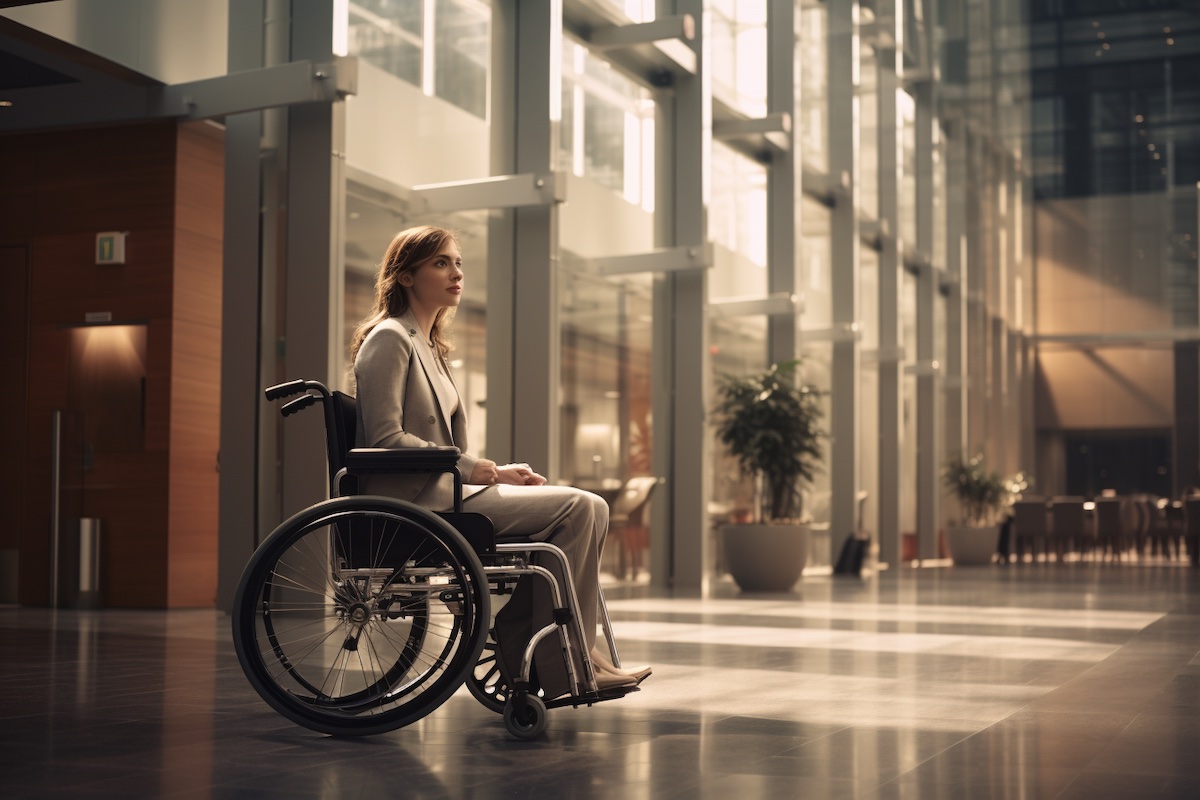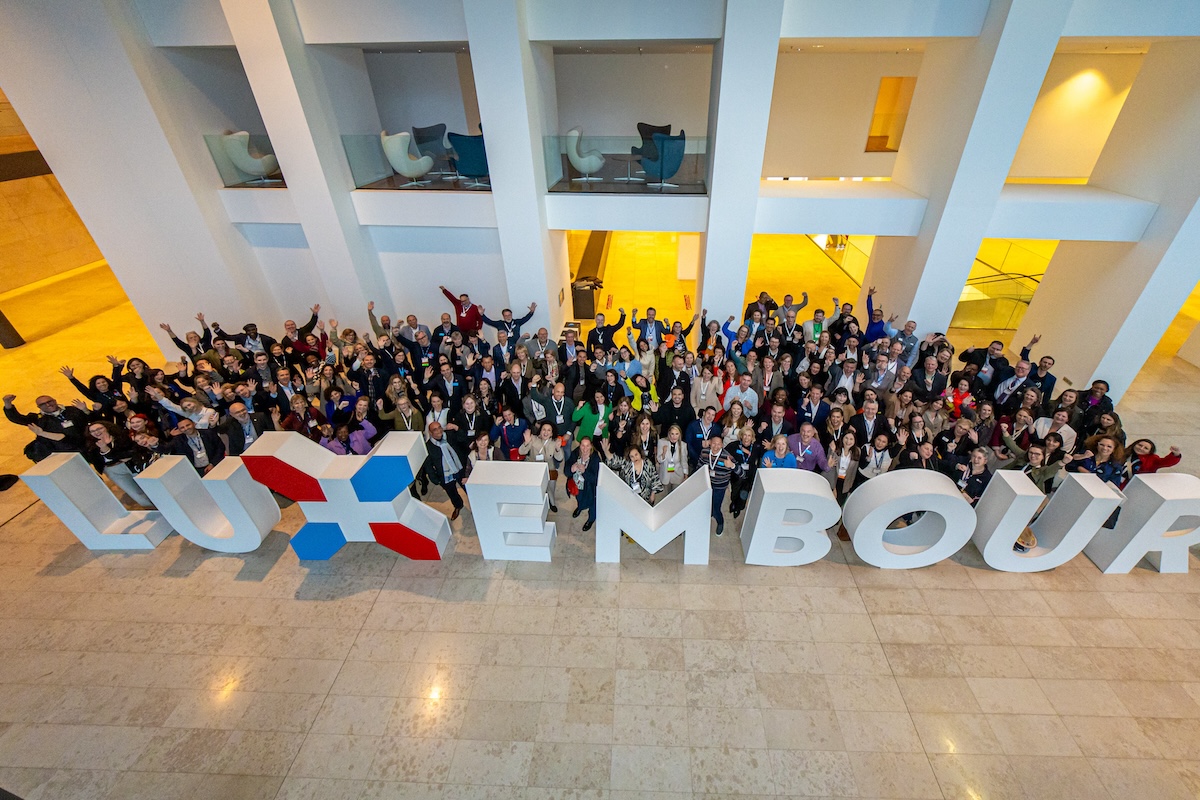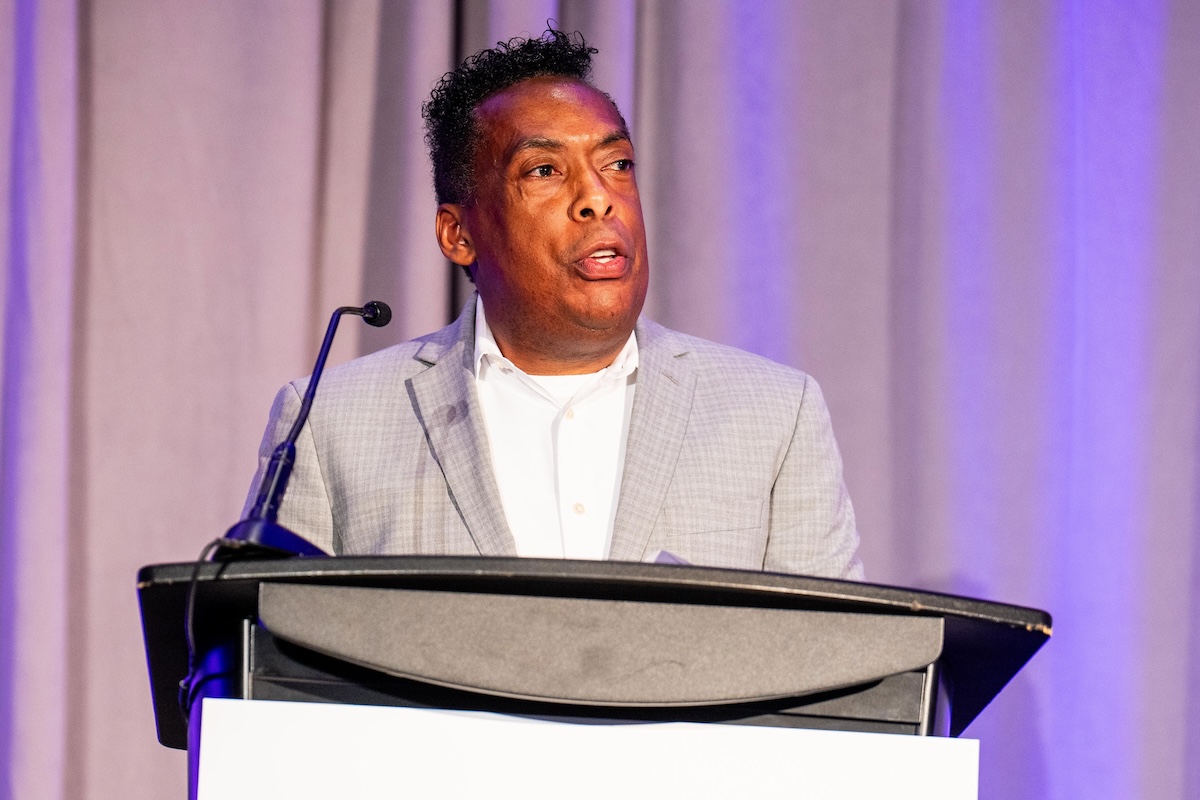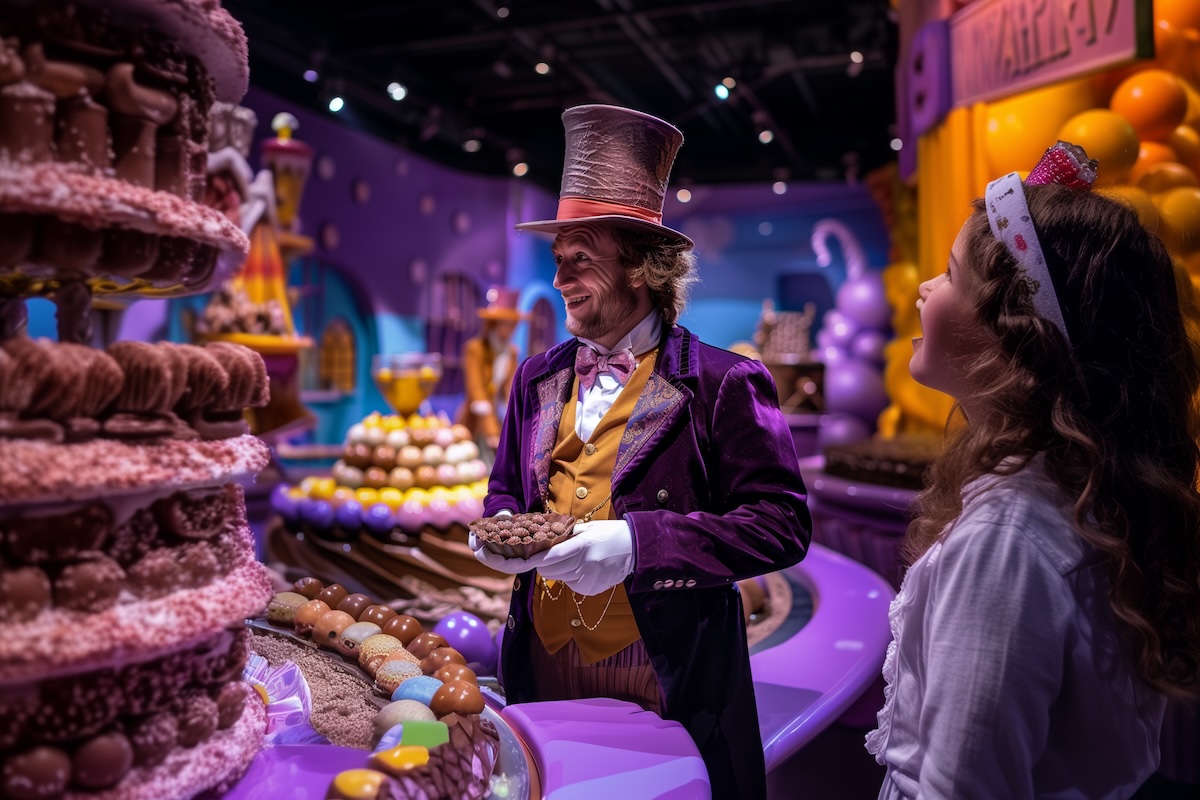Skift Take
ADA compliance is just the beginning. Attention to detail is crucial for creating a comfortable event environment for wheelchair users.
If a venue complies with the Americans with Disabilities Act (ADA), it must be wheelchair accessible, right? Unfortunately, meeting this baseline standard doesn’t guarantee the comfort of attendees who rely on mobility aids.
Rosemarie Rossetti, Ph.D. — a disability advocate with 25 years of experience in a wheelchair — has a message for event planners looking to make their events more inclusive: “If you can, tour the venue in a wheelchair. See what it’s like to move around the space.”
That was the core concept behind the “Event Mobility & Accessible Design” experiential tours offered at PCMA’s EduCon. Rather than simply watching how Rossetti navigated the venue, many participants pushed themselves across the floors while sitting in wheelchairs. Arms became tired from rolling over carpeting, swinging doors became nearly impossible to open, and sight lines came down to seating level.
However, the point was less about experiencing life in someone else’s shoes and more about appreciating all of the little details that might otherwise never even occur to planners if they hadn’t experienced them firsthand from the seat of a wheelchair.
“This is not an exercise in sympathy,” explained Howard Givner, senior vice president of knowledge and innovation for PCMA. Givner collaborated with Rossetti to create and design the experience. “The idea is to come away with practical takeaways that you can start implementing at your events to make them more accessible.”
This is the first installment of a broader initiative called the Accessibility Immersion Project. It will include additional immersions designed to simulate visual, auditory, and neurological disabilities. The project’s goal is to help planners create more accessible event environments.
Planners React to New Understanding of Accessibility Needs
If anyone can understand the challenges of implementing an accessibility plan that goes beyond the baseline, it’s Rossetti and the PCMA team. The tour itself almost didn’t happen because renting wheelchairs outside their U.S. networks proved more difficult than expected (EduCon took place in Canada). Given the cost and surprising difficulty in procuring the chairs, Givner asked participants how important being in an actual wheelchair was in raising awareness of accessibility challenges for people with mobility disabilities — instead of just having Rossetti share best practices in a typical classroom session. Was it worth the extra hassle? The answer was a resounding, “One thousand percent!”
“This shows the power of experiential events to shift perspectives, in a way other media simply can’t measure up,” said Givner.
Participants shared their top takeaways from the experience during the post-tour debrief. It was clear that the tour opened their eyes to issues they had not considered before.
Here are five of the key areas that participants called out as game changers in their work as meeting planners.
Floor Surfaces
It might seem obvious that navigating through a space is more difficult in a wheelchair than on foot. However, many elements must be experienced for a true understanding.
Foremost is the impact of floor surfaces. Rolling over smooth surfaces felt like a relatively easy glide, while pushing over carpeting felt like swimming against a current. The thicker the pile, the more resistance there is. This means arms tire faster, and traveling the same distance takes longer.
With that said, it’s important to know that competing views exist on the pros and cons of carpeting at events. Rossetti noted that many were in an uproar at San Diego’s Comic-Con for skipping the carpeting in 2022 and 2023. Wheelchair users, however, were grateful for the change. On the other side of the argument are those who are hard of hearing and anyone prone to joint pain when walking or standing for long periods. For them, carpeting means noise-dampening acoustics and some degree of cushioning.
While there are no easy answers, event organizers may have to take their audience’s unique needs into consideration when making flooring decisions. A happy medium may be to aim for low-pile carpeting and incorporate smooth surfaces in strategic throughways.
Another best practice would be to build in longer schedule breaks to account for the travel time needed in a wheelchair, especially when carpeting is a factor.
Elevators and Ramps
Going between floors using an elevator was another eye-opener during the tour. We were lucky: The elevators were half full, and fellow passengers were so accommodating that it was hard not to feel undeserving as a ‘pretend’ wheelchair user. Even so, navigating in and out of the tight space was difficult. Again, make sure to take the extra travel time between floors into consideration when designing your agenda.
Tour participants also had to be careful about what ramps they risked using. Service ramps for wheeling carts can be dangerously steep for wheelchair users. For a sense of how gradual the slope needs to be, the ADA requires that wheelchair ramps have 12 inches of length for every inch of vertical height. To avoid well-meaning attendees unwittingly sharing directions to a service ramp, empower wheelchair users to find the wheelchair ramps themselves with clearly marked event maps and well-placed signage.
Making Escape Routes Accessible
We’ve all had to begrudgingly make our way down the stairs at some point during an emergency drill. Now imagine what it would feel like to hear the alarms go off while sitting in a wheelchair — especially in a real emergency. “That was one of the lightbulb moments for me,” said one of the tour participants.
Rossetti recommends looking for venues with evacuation chairs, sometimes called escape chairs or stair chairs. These special chairs have both wheels and caterpillar tracks that allow the device to slide down stairwells. At least one person must be on hand to help push the evacuation chair down the stairs. Ideally, another person will be available to carry the wheelchair down as well. If an evacuation chair isn’t available, a trained staff member must carry the wheelchair user.
Seating and Doorways
Apart from complicating passage down stairways, wheelchairs also affect the amount of space needed to get through passageways. More than accommodating the exact width of the wheelchair: Elbows and sharp turns can demand extra room.
The space between seats often leaves only a tiny bit of wiggle room. And it gets even tighter once people have begun to take their seats. One tour participant asked if it would be best to reserve seating for those in wheelchairs along the edges. Rossetti recommended that volunteers help them navigate the space. This solution allows them to sit where they feel most comfortable — for example, with familiar faces. Rossetti added that reserved seating should be made available for those who prefer it. Hard-of-hearing attendees, for instance, might prefer to sit up front where they’ll have a better view for lip reading purposes.
Similarly, doorways should leave plenty of extra room and either be automatic or kept open.
Accessible Access to Food
When it comes to gathering food at a buffet, there are three complicating factors for wheelchair users: being able to see all of the food, reach it, and then transport it to the table. As tour participants experienced, sight lines are often quite different from a sitting position. Be sure to check if all selections are visible from sitting height, and ensure volunteers or staff are available to help gather the food and carry it to the table. (It’s pretty hard to push the wheels of a chair while also holding a plate and a beverage.)
Even arriving at the table poses its own hazards. Table legs can limit where wheelchairs will fit, and tablecloths can make it hard to spot the best seats. A volunteer can once again help with locating a workable spot.
The Big Picture
Rossetti shared a wide range of tips, from accessible hotel bed designs to the optimal height for sidewalk curb cuts. Her overriding message: Ask attendees what accommodations they need, ideally during registration.
At the event, she recommends that everyone ask, “Can I be of help?” While some might prefer to go it alone, there’s no harm in respectfully offering assistance. It ultimately comes down to listening and responding — and, where possible, experiencing the impact firsthand.
The Event Leadership Institute (now part of PCMA) is creating a micro-course titled Accessibility Training for On-Site Event Staff with a collection of best practices. “Last fall we launched our Event Accessibility Strategist course to help planners design accessible events, but we felt we needed a separate, shorter course specifically tailored for the armies of staff that show up to run the events,” said Givner. During the EduCon tour, PCMA used a GoPro camera to capture the first-person perspective for use in both courses.
Photo credit: Midjourney / Prompt: Business woman sitting in a wheelchair entering a convention center





